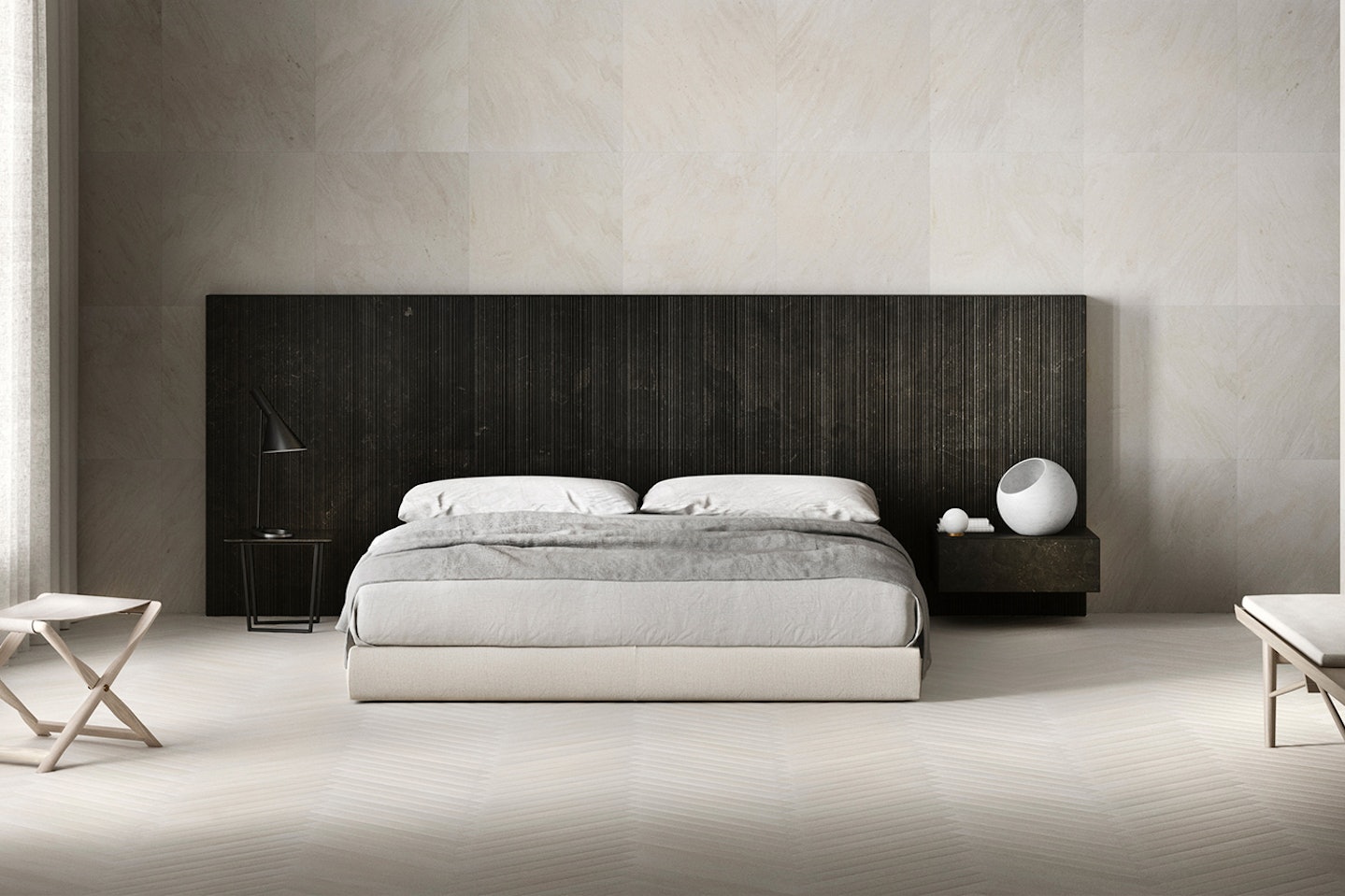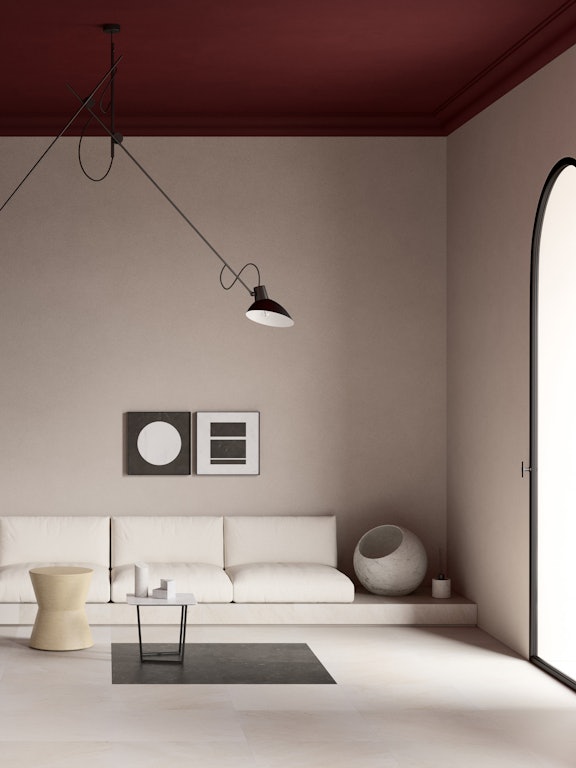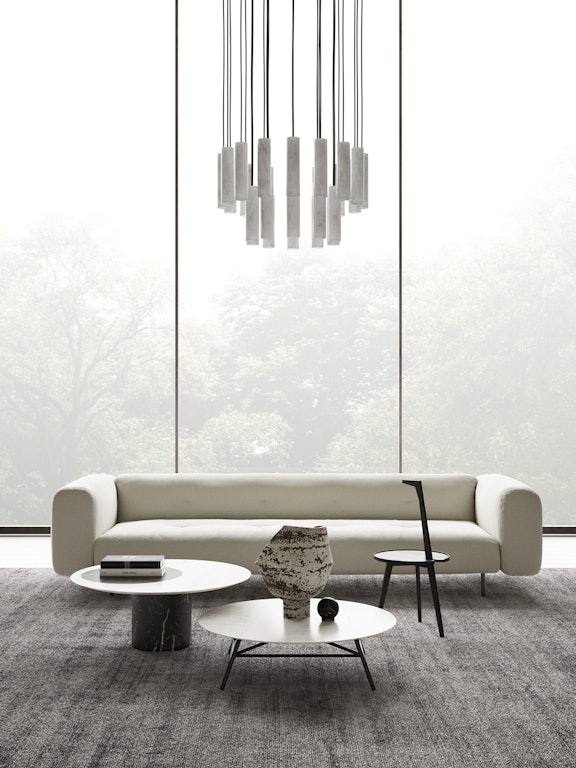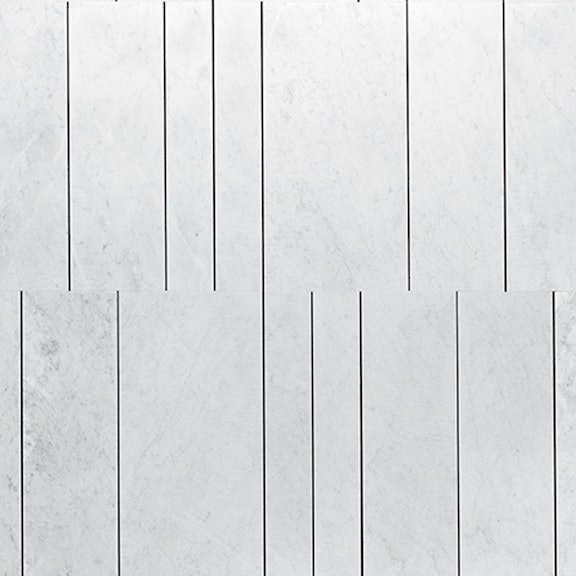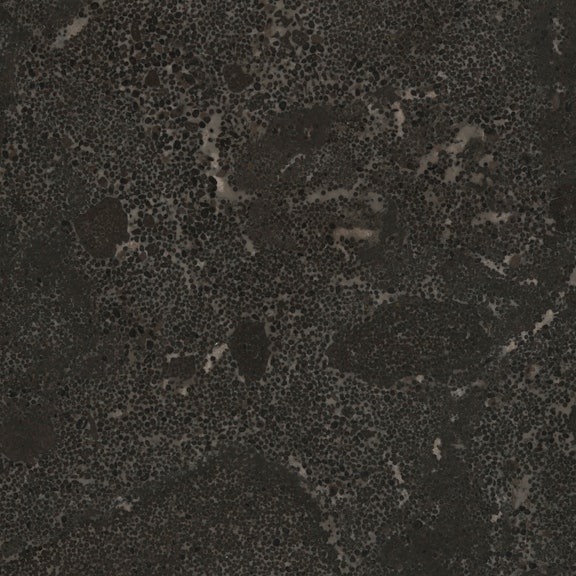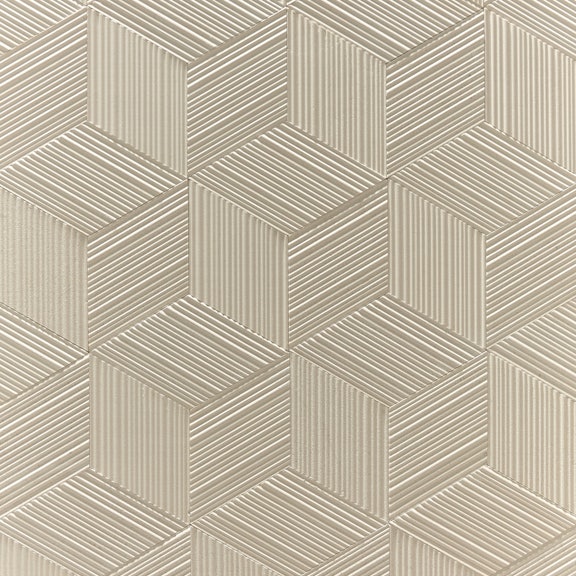How to Match Wall and Floor Colours: the 4 Best Combinations
03.2022
Do you need to pair wall and floor colours? Discover the main tricks and the most popular combinations
Matching Wall and Floor Colours: 4 Common Combinations
Whether you’re renovating or designing a new home, matching wall and floor colours is always a tricky challenge. The perfect combination of these two elements can add character and elegance to any room. But how do we create the perfect pairing for our needs?
In this article we will look at the main aspects to consider when choosing and the 4 most popular combinations to create a dream interior!
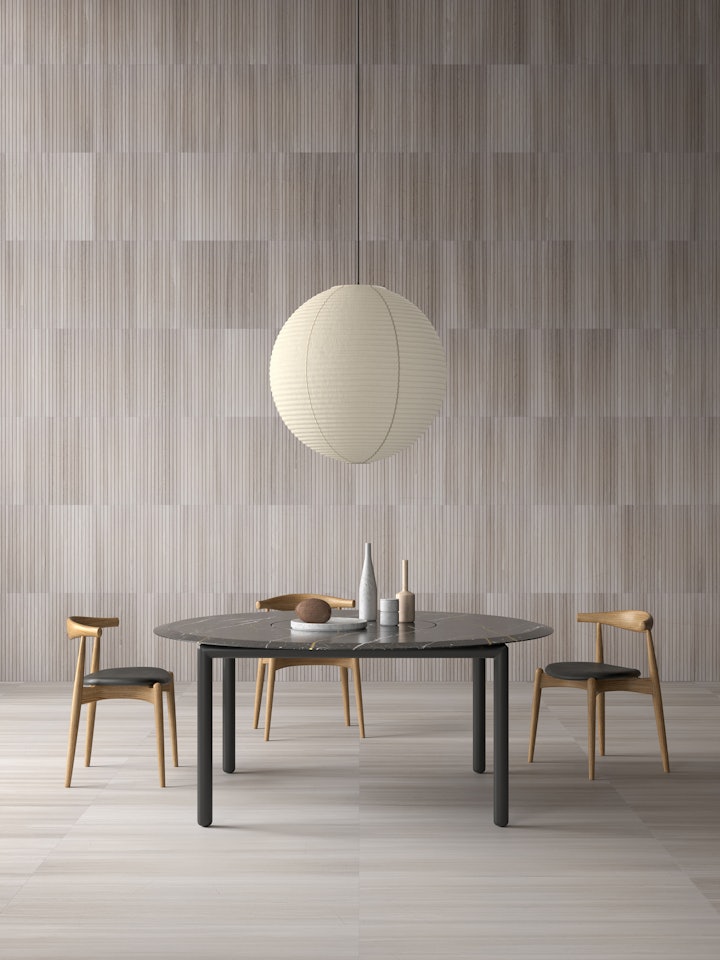
Matching Wall and Floor Colours: The Basic Rules
The right combination of walling and flooring will give an important impression to the style of every room.
However, in order to achieve the perfect match, as well as taking into account your personal tastes, there are a number of basic rules that should not be overlooked.
For every room, there are essentially 3 parameters to consider:
- The dimensions
- The lighting
- The intended use
A first and fundamental aspect to consider are the dimensions of the room: rooms on the smaller side will need coverings that increase the perceived size of the environment. In this case, the use of light tones both in the floor and on the walls is recommended.
On the other hand in the case of a large room, light-coloured walls could risk making the environment appear stark or austere. A contrast with a dark grey floor can provide a pleasing balance against this effect, and establish a more welcoming environment.
Beyond the size of a room, the combination of flooring and walls is greatly influenced by the lighting of a room. A poorly lit space, especially if there is no natural light, will certainly benefit from the brightness that a lighter colour palette can bring. In this case, a combination of light-coloured flooring and wall coverings is the best choice. Like a light grey floors and light dove-coloured walls, or a delicate tone on tone effect. A good example would be a room whose walls and coverings both used Silk Georgette®, for a beautiful and complete Salvatori look.
Alternatively when the room to be decorated is an environment that has bountiful sources of natural light, even if it’s small, one can certainly be more daring with darker colours to create a more unusual style.
The third essential rule when choosing walls and floors is to always consider the intended use of the room: certain colours hold the capacity to relax, others to stimulate focus and vitality.
Significant contrasts between walls and floors with bright colours are perfect for those areas of the house that maintain a certain vitality in daily use: the living room and the kitchen. For areas dedicated to rest and relaxation, such as the bedroom and bathroom, soft contrasts with neutral colours or harmonious tone-on-tone combinations are the best choice.
These rules are important, but not unbreakable: beautiful contrasts with neutral tones, for example, can also be perfect for furnishing classical bathroom spaces (read on to see some elegant examples.)
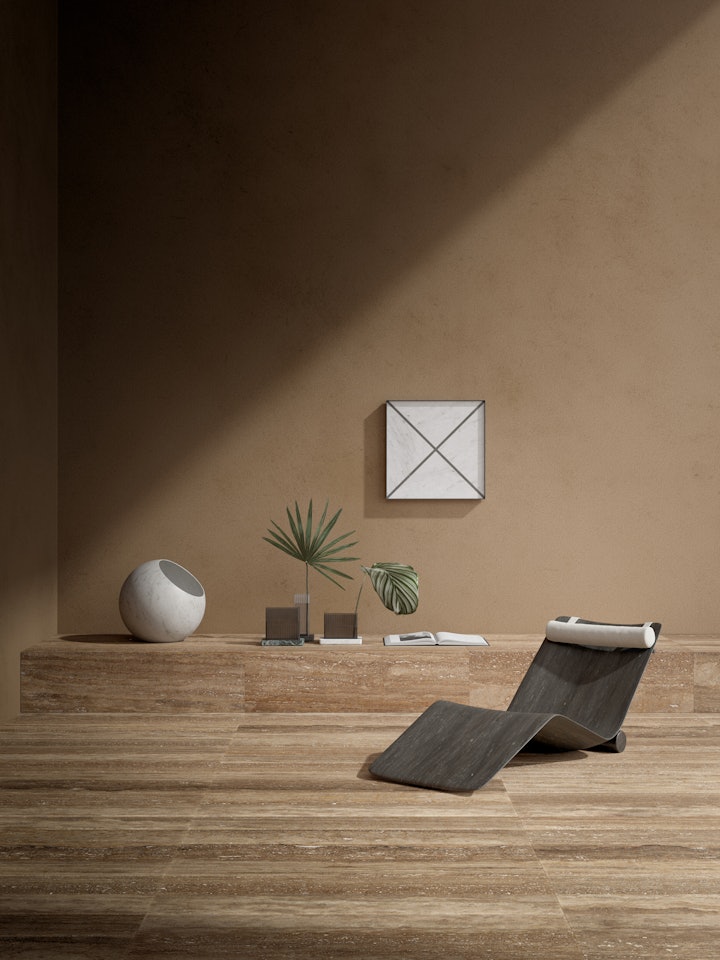
How to Match Floors and Walls: Popular Combinations
After covering the basic rules which guide the choice for matching walls and floors, let’s take a look at the more common combinations.
Apart from particular choices, such as combining different floors or inserting a single brightly coloured contrasting wall, the main pairings of walls and floors can be divided into two macro-categories:
- Tone-on-tone combinations
- Contrasting combinations
As we’ve already mentioned, a tone on tone combination is perfect to give a certain continuity to the environment and for areas of the house used for relaxation. There are two sub-categories of tone-on-tone combinations: tone-on-tone created with light-coloured floors and walls, and tone-on-tone created with dark-coloured walls and floors.
In opposition to the tone-on-tone pairing, we find the combination of contrasting walls and floors. As already mentioned, this type of combination is better suited to the more lively areas of the house, and is excellent if you are looking for a strong effect that gives a touch of character to the room. Again, within this macro-category there are two frequent combinations: the contrast created between dark walls and light floors, and the contrast created by combining dark floors with light walls.
Let’s now take a more detailed look at the four common combinations we have just listed, and see how they can be applied effectively in the design of the home.
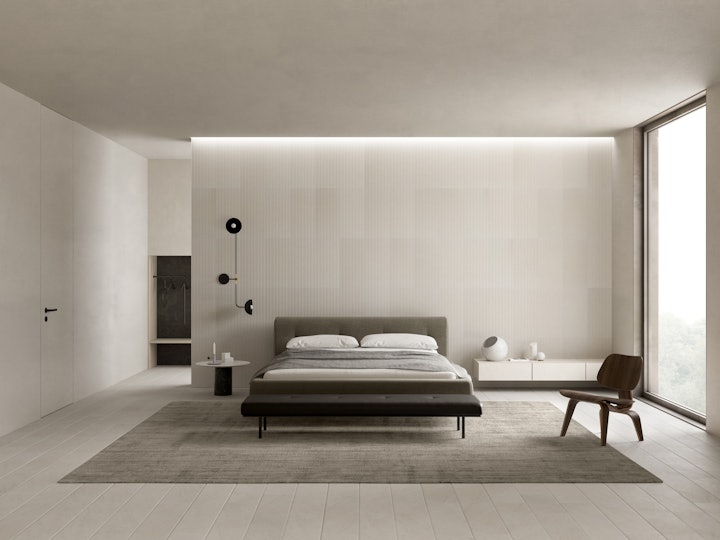
Floors and Walls in Light Tones
The first combination we will analyse together is a tone on tone effect created with light hues. This is perhaps the most common combination in Italian interiors: it is a combination that manages to provide a sensation of space and brightness to even the smallest and darkest of rooms.
The harmony of the shades, whether tone-on-tone or with a very soft contrast, succeeds in restoring peace and tranquillity to the environment in which it is placed.
This is the case in in this beautiful bedroom: the harmony created by the matching of wall and floor materials is palpable. The simple lines of the light beige Stone Parquet in Crema d’Orcia covering the floor blend seamlessly with the wall in Crema d’Orcia Select Plissé and the Balnea modular drawers in Crema d’Orcia Levigato, creating an incredible continuity.
In this harmonious environment, the accessories which complement the furnishings are also skilfully inserted, creating a soft contrast with the room in light tones: the pale Urano lamp, the Kilos bookends, the Gravity paperweight, and the Bugia candle holder, all made of the precious Bianco Carrara, contribute to the concept of a bright and relaxing space.
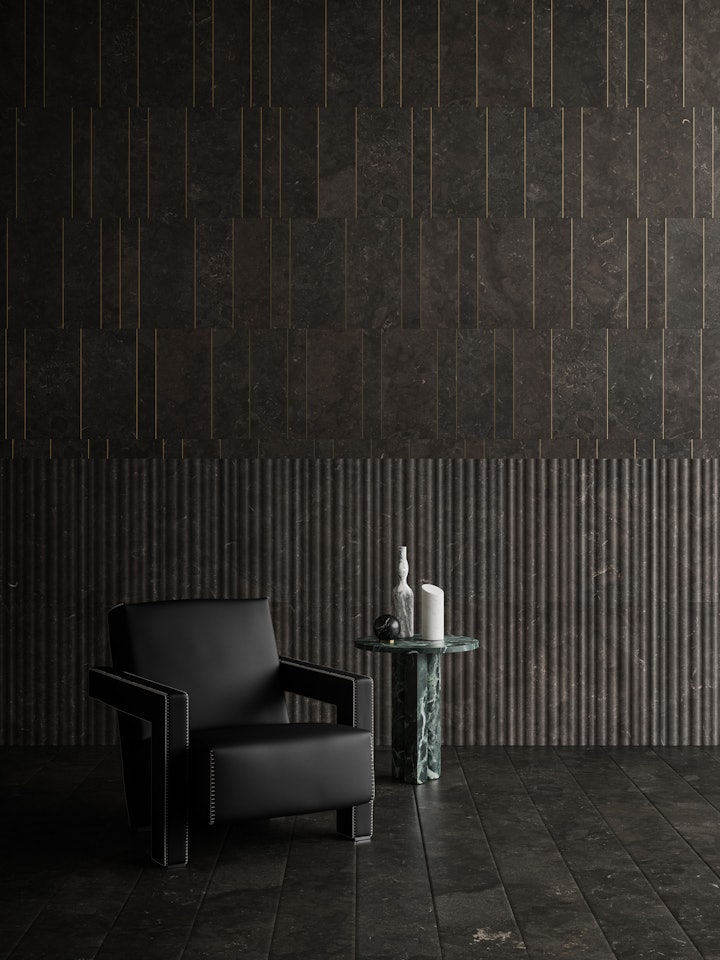
Walls and Floors in Dark Tones
The other type of tone-on-tone combination is achieved by combining walls and floors in dark hues. As we have already covered, the use of dark tones is particularly suitable for decorating very large and very bright rooms: deep colours tend to absorb light, and in the case of a very large and bright room they can succeed in redefining the space.
In the instance of a combination with a soft or non-existing contrast, this subtle juxtaposition can be particularly suitable for rooms which are meant to inspire relaxation, but this does not prevent this pairing from being used for other types of rooms, such as the living room.
This is the case in the photo opposite: the warm tones of Pietra d’Avola, on the floor in the Stone Parquet finish, and on the walls in the rhythmic Rain finish as well as the precious Tratti, give depth and warmth to this area of the living room with its minimalist lines.
On the exquisite table in Verde Alpi Love me, Love me not, by designer Michael Anastassiades, the elegant furnishings shine in the natural light that floods the space. The precious veins of the sculpture Omaggio a Morandi stand out against the dark tones of the room, acquiring a unique vitality.
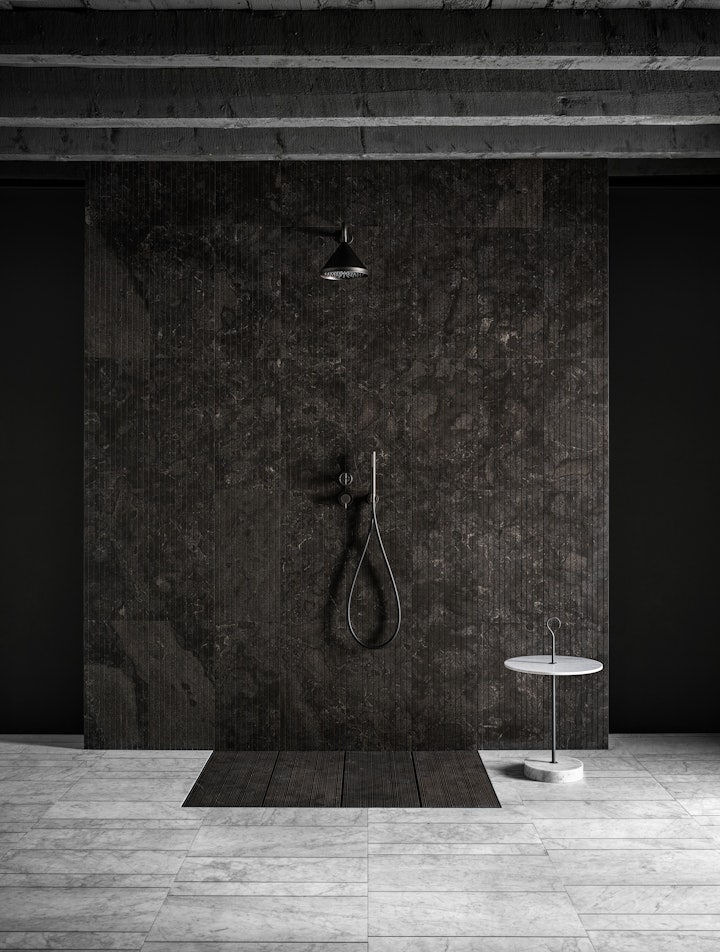
Light Floors and Dark Walls
When you want to give character to a room, especially when you’re dealing with furniture that has simple lines and neutral colours, contrasting floors and walls is a good choice: light-coloured floors brighten up rooms with dark walls.
But contrasting walls can also be useful in another important case: when you want to emphasise an element of the furniture: a wall in dark tones, set against a light grey floor, for example, will be able to emphasise the element to which it serves as a background.
A beautiful example of this contrast can be seen in this beautiful and spacious bathroom with modern lines: the rhythmic Tratti floor in Bianco Carrara Cotone with Midnight Black inserts contrasts with the deep but refined continuous lines of the wall in Pietra d’Avola Infinito. In this way, the wall gives an importance and prominence to the stylish walk-in shower, thanks also to the coordination of materials with the essential Filo shower tray.
The elegant coffee table from the Pietra L05 collection creates a further point of continuity, allowing the light tones of the floor to rise up: a perfectly harmonious ambiance emerges.
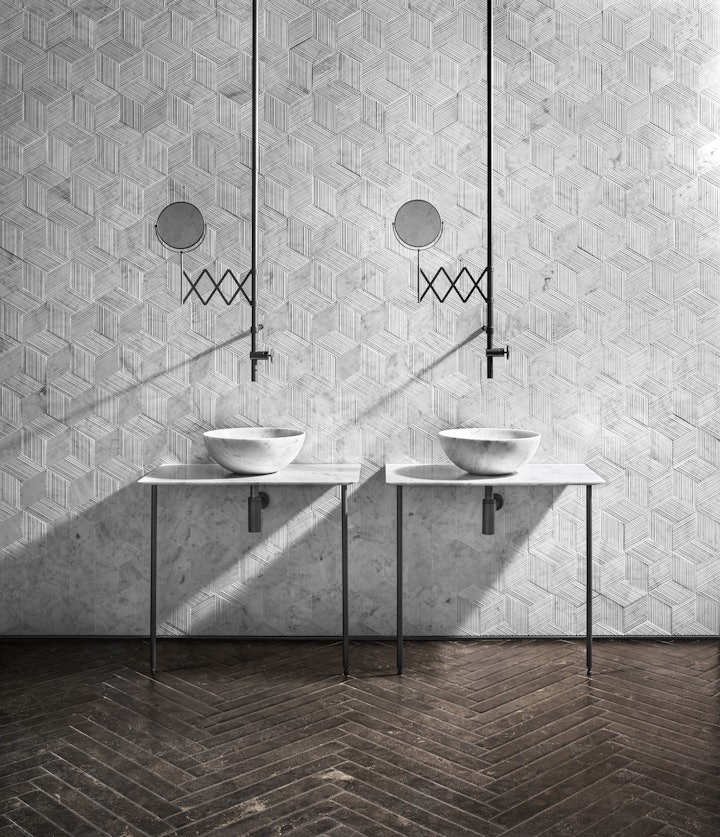
Dark Floors and Light Walls
The last combination to consider is one which allows you to create a striking contrast by installing a floor with dark tones and light walls: a dark floor stands out if flanked by light tones, and at the same time gives depth to the room in which it is installed.
It’s very common in construction to find the combination is the accompaniment achieved by combining a dark shade of parquet with lighter wall colours such as dove gray, light grey, or a more classic white.
This type of combination is well suited to areas with more dynamic architecture. Realised through combining materials of natural origin, such as natural stone, it’s a perfect method for furnishing a refined bathroom in a modern style.
In this photo you can see clearly the unique qualities of this style: the dark tones of the Stone Parquet Pietra d’Avola floor create a wonderful contrast with the bright tones of the wall in Romboo Bianco Carrara.
The warming effect of the hardwood flooring, combined with the precious and unique patterns of the Bianco Carrara, helps to create a relaxing sensation of a reunion with nature which every bathroom should convey.
In communion with the walls, the two ethereal Ninfa Washbasins contribute their fine edges and delicate textures, working together to conjure a dreamlike setting.
So we’ve arrived at the end of our guide. As we have seen, combining walls and floors in the correct way allows you to create harmonious environments filled with character.
However to do this, it is always necessary to take the time to study the environment and all its characteristics in depth in order to find the best combinations. Avoiding risks and relying on an expert eye is the wisest choice.
So why wait any longer? Have a browse of our natural stones and textures and contact us now! We’re confident our experts will be able to find the perfect match for you.
